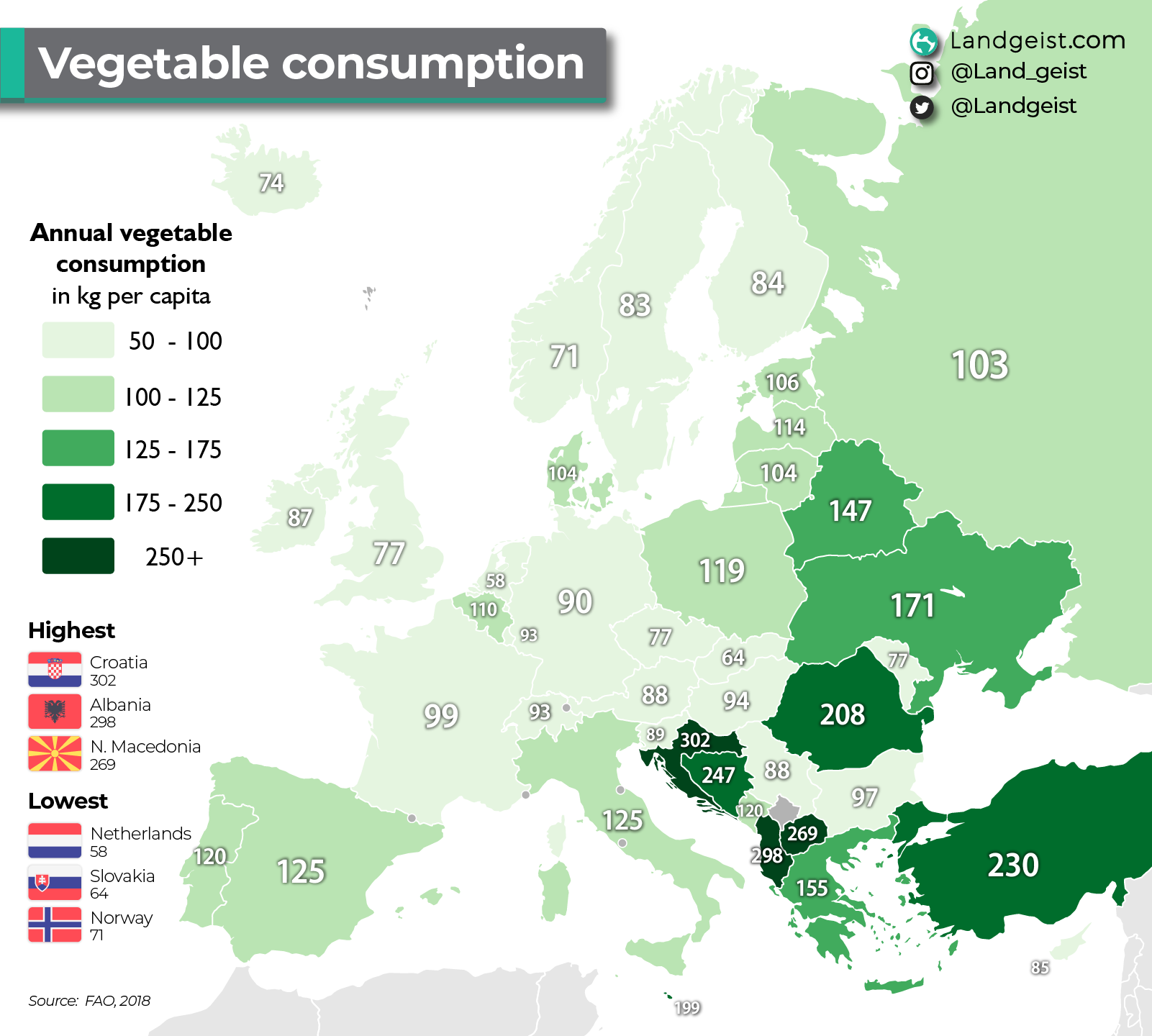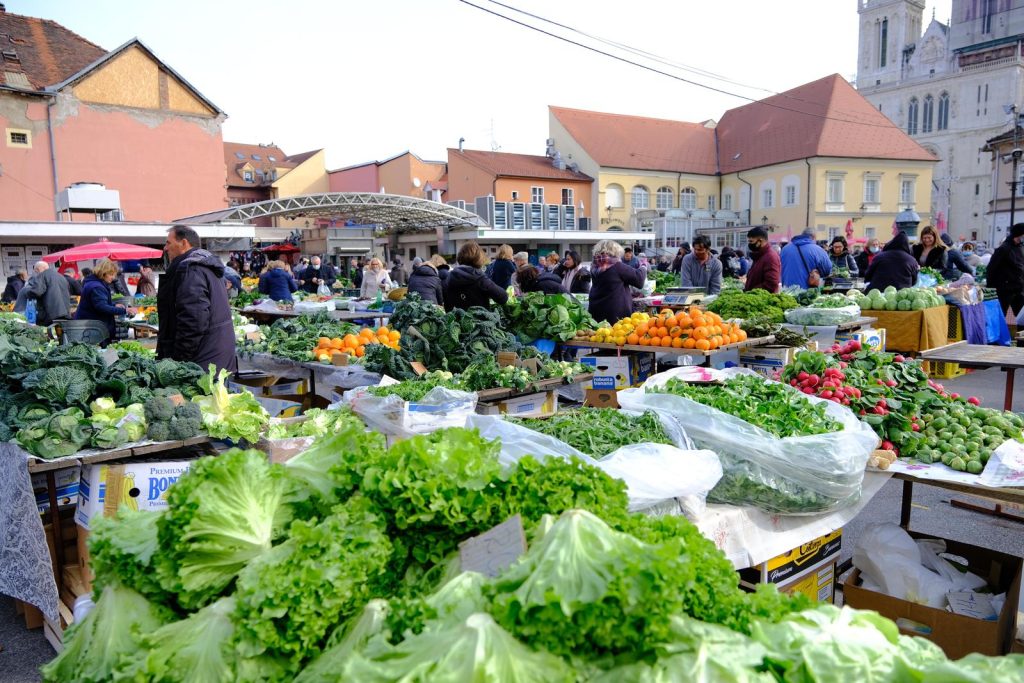Every day you learn something new about Croatia, and usually, they are things that you may never have imagined. When we talk about rankings, it is well known that Croatia is always among the first when it comes to the most beautiful countries in the world, the safest to walk at night, with the cleanest seas, among the best destinations for digital nomads, and much more.
However, would you have ever imagined that Croatia would be among the top when it comes to their consumption habits? According to statistics from the Food and Agriculture Organization of the United Nations (FAO), Croatia consumes more vegetables than any other European country. The Landgeist web portal compiled statistics from all European countries and created a map where it is possible to compare the annual consumption of kilos of vegetables per capita. According to these statistics, Croatia consumes 302 kgs of vegetables annually per capita.

Map: Landgeist.com
If you are Croatian, it may not surprise you that your country ranks among the top in vegetable consumption, especially if you look at your own plate during lunch both at home and in a restaurant. However, it is still a really remarkable fact that Croatia consumes more vegetables than any other European country considering that there is an agricultural tradition in the continent that goes back hundreds of years. If there is something worth highlighting, it is that Croatia’s main competitors for this recognition are precisely countries of the Balkan region. In the second place ranks Albania with an annual consumption of 298 kilos of vegetables per capita, and in third place is North Macedonia, with an annual consumption of 269 kilos of vegetables per capita.
As Landgeist.com explains, the amount of vegetables one needs depends on age and sex. But on average, this is about 240 grams per adult per day or 87.6 kg per year.
”We can see that a bit more than half of the European countries meet this requirement. Cyprus, Czech Republic, Finland, Iceland, Moldova, the Netherlands, Norway, Slovakia, and Sweden do not meet the requirement, with the Netherlands consuming the smallest amount of vegetables in all of Europe”, states the web portal.
But how exactly does the FAO define vegetables? It probably matches mostly with what you would consider a vegetable. However, there are a few interesting exceptions. Potatoes are not counted as vegetables. Mushrooms, melons, and watermelons are. Yes, the FAO considers melons and watermelons vegetables. This is the FAO’s explanation: “This grouping differs from international trade classifications for vegetables in that it includes melons and watermelons, which are normally considered to be fruit crops. But, whereas fruit crops are virtually all permanent crops, melons and watermelons are similar to vegetables in that they are temporary crops”. If you want to see FAO’s complete list on the classification of vegetables, click here.
In any case, congratulations to Croatia for continuing to stand out in lists that reflect healthy habits among its population!
For more, check out our lifestyle section.











